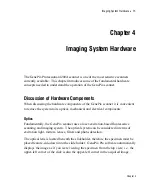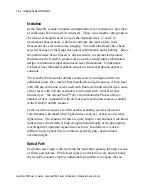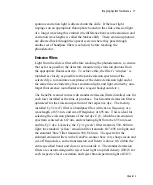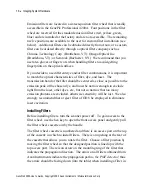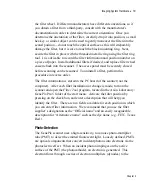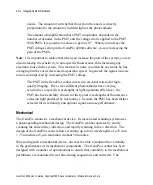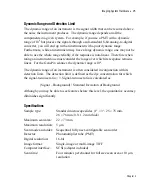
20
•
Imaging System Hardware
anode. The amount of current that flows from the anode is directly
proportional to the amount of incident light at the photocathode.
The amount of amplification that a PMT can produce depends on the
number of dynodes in the PMT, and the voltage that is applied to the PMT.
With PMTs it is possible to achieve a gain of 10
7
. When you increase the
PMT voltage setting in the GenePix 4200A software, you are increasing the
gain of the PMTs.
Note
: It is important to realize that when you increase the gain of the system, you are
also increasing the sensitivity to non-specific fluorescence, thus increasing any
electronic noise in the system. This increase in noise can often be overcome by line
averaging but the cost is decreased acquisition speed. In general, the signal-to-noise
ratio is not improved by increasing the PMT voltage.
The PMT in the GenePix scanner meets two essential criteria for high-
quality imaging. First, since different photocathodes have varying
sensitivities to specific wavelengths of light (quantum efficiency) , the
PMT has been carefully chosen for the typical wavelengths of fluorescence
emission light produced by microarrays. Second, the PMT has been further
selected for its reliability and optimal signal-to-noise performance.
Mechanical
The GenePix scanner is a mechanical device. Its laser-based scanning system uses
a patent-pending mechanical design. The GenePix scanner operates by slowly
scanning the slide in the
y
-direction, and rapidly scanning in the
x
-direction. The
design of the GenePix scanner allows scanning up to four wavelengths of a 25 mm
× 75 mm slide at 5-
µ
m resolution in about 30 minutes.
When using such a mechanical device, one must be able to monitor the variability
in the performance of its mechanical components. The GenePix scanner has been
designed with a number of optimizations to ensure that variability in the mechanical
performance is monitored in real time during acquisition, and corrected. The
GenePix 4200A User’s Guide, Copyright 2005 Axon Instruments / Molecular Devices Corp.










